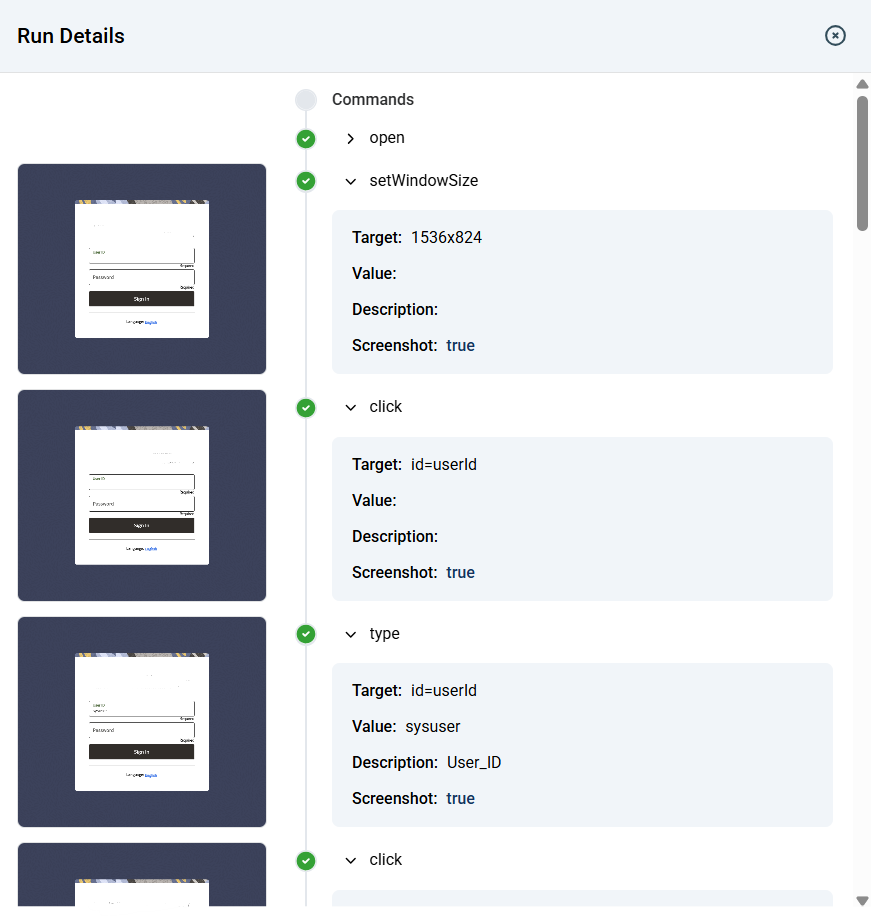Step
Overview
Steps are individual actions or instructions that make up a Scenario, and multiple steps can be associated with a single scenario. A step can also be reused across different scenarios within the same Project. There are no limitations on the type of steps you can add in a scenario as long as they are part of the same project. Any changes made to a step in a flow will be reflected across all flows where that step is reused.
If you want to prevent any changes to a step from affecting other Flows, you can use the Clone Step or Clone Scenario option at the test flow level. By assigning a unique name to the cloned steps or scenarios, you ensure that any future changes to the original will not impact the cloned entities.
View
In the upper left corner, select your project from the Select Project dropdown list and the version from the Version dropdown list. Only the steps associated with the selected project and version are displayed on the left pane.
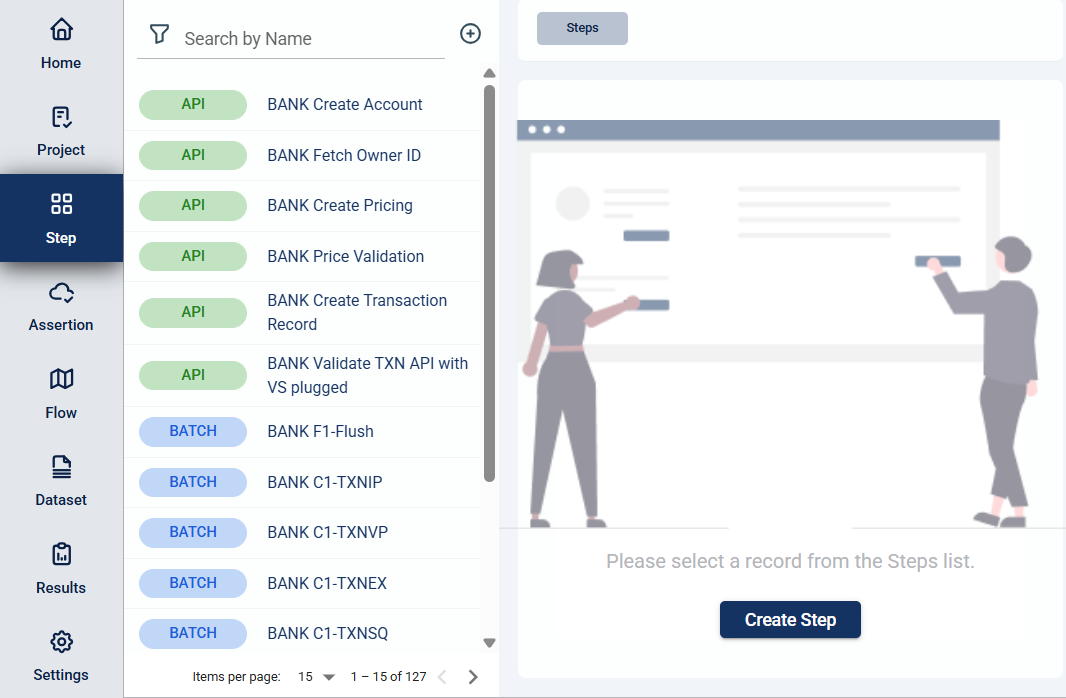
Edit a step
To view or modify the details of a step, select the step from the left pane that lists all steps associated with the selected project and version. You can change any detail by directly editing the corresponding field. Ensure to click Update after making your modifications.
Search
The search feature allows you to find a specific step by entering a keyword or the full name of the step on the textbox. Only the steps that match the provided keyword or name will be displayed in the view.
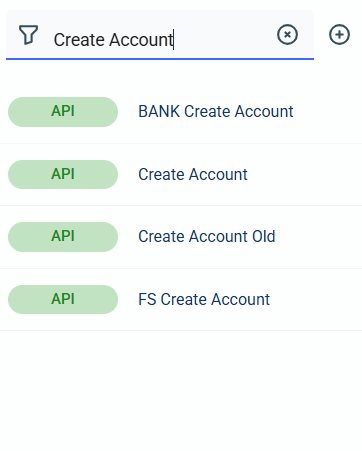
Filter
The filter feature allows you to filter the list by clicking the ![]() icon to select the Step Type. For example, you can get the list of only API steps by selecting
icon to select the Step Type. For example, you can get the list of only API steps by selecting API in the Step Type dropdown list.

Create a step
To create a step, click on the Create Step button and enter valid values to the following fields.
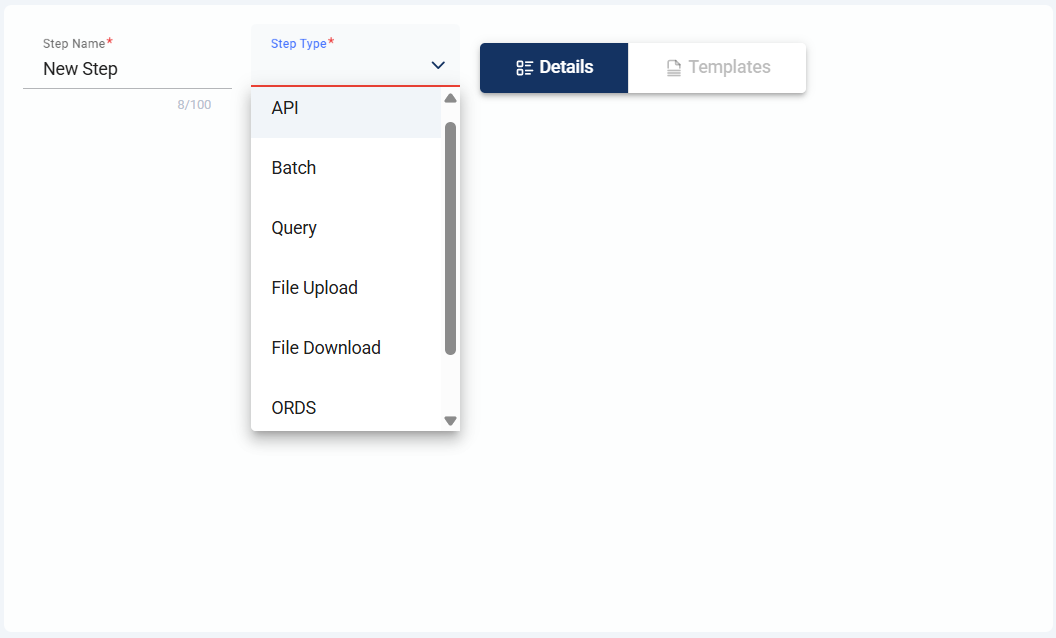
| Field Name | Description |
|---|---|
| Step Name | Name of the step. It should be a minimum of 5 characters long. Mandatory: Yes |
| Step Type |
Specifies the type of step. The following are the possible values: Mandatory: Yes |
Create an API step
To create an API step, enter valid values in the following fields:
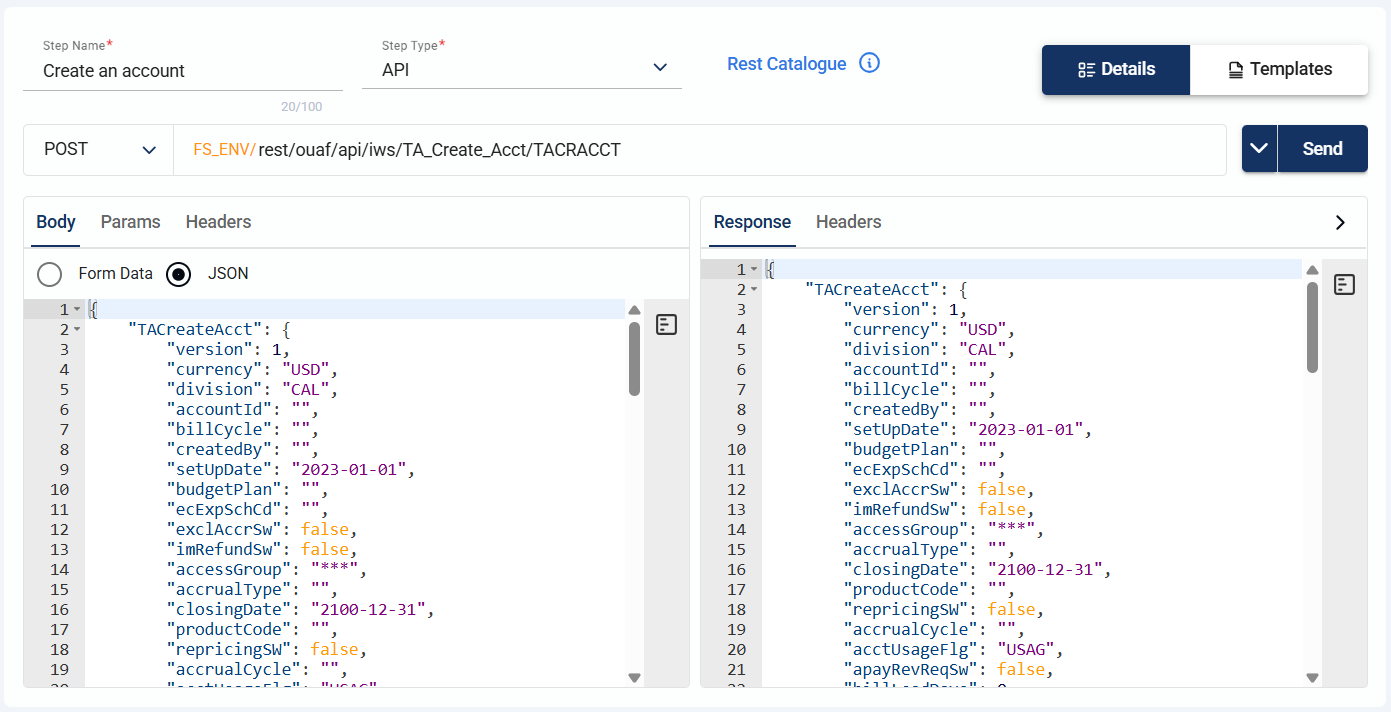
| Field | Description |
|---|---|
| HTTP Method | Specifies the action to be performed by the external system to your server. The following are the possible values:
|
| URL | Specifies the API URL used for the validation. It consists of 2 parts:
Mandatory: Yes |
| Params | Specifies the type of parameters for query execution and data retrieval. You can specify the parameters in the following ways:
Mandatory: No |
| Body | Specifies the payload details of the step. You can choose between the following formats:
Mandatory: No |
| Headers | Specifies the API headers in HTTP requests or responses that provide important metadata, such as content type, authentication details, and instructions for processing the data. |
| Template | Template for a request payload. For more information, see Template. |
| Response | Displays the data returned by the server in response to an API request. They contain the information or results of the request, such as user data, search results, or confirmation messages. |
Template
A request payload template simplifies dataset configuration by defining the structure of the request body, including JSON nodes and parameters like path or query parameters. The values in the template can be static, user input, or project variables:
- Static values: The same value is used every time the dataset is used.
- Project variables: The value of the project variable assigned to the node is used.
- User input: The user provides the value each time the dataset is configured.
The purpose of the template is to declare fixed values once and reuse them in datasets, reducing configuration effort. Only the varying fields need to be populated when the template is reused.
Create a Batch step
To create a batch step, select a batch from the Batch Name dropdown field and enter valid values in the following fields:
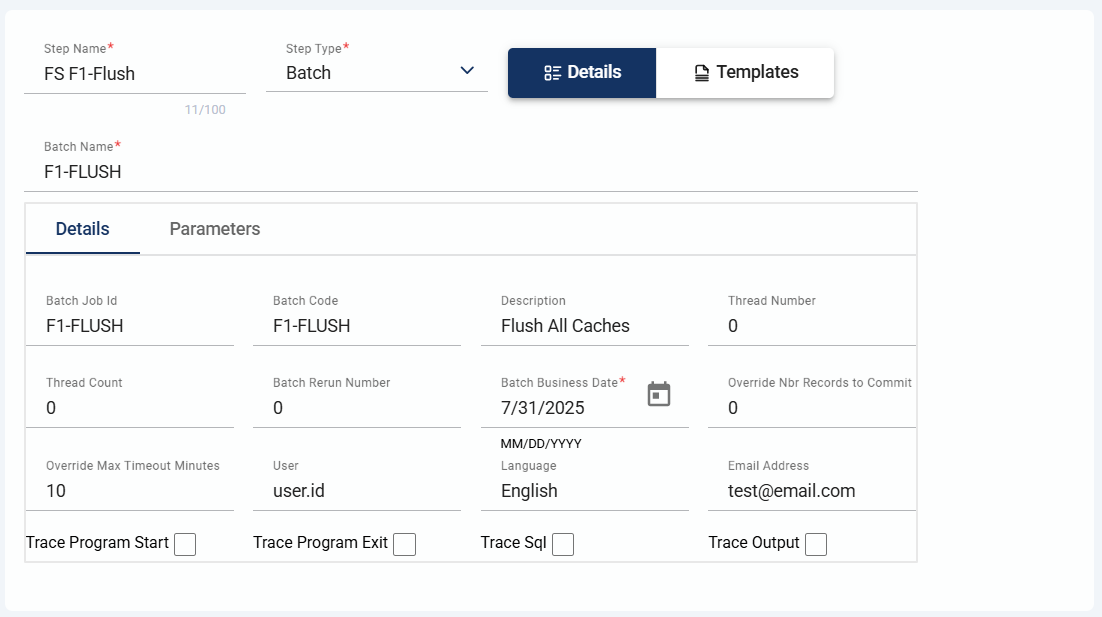
| Field | Description |
|---|---|
| Batch Job ID | Unique identifier of the batch job. |
| Batch Code | Unique code that associates with the batch job. |
| Description | Description of the batch. |
| Thread Number | Thread within the batch process. |
| Thread Count | Total number of threads to be used for parallel processing within the job. |
| Batch Rerun Number | Run number of the re-execution of a batch process in ORMB. |
| Batch Business Date | Specific date for ORMB transactions to be processed. |
| Override Nbr Records to Commit | Total number of records that can be manually overridden and committed to the database during a batch process in ORMB. |
| Override Max Timeout Minutes | Maximum time limit for a process to run before it times out. |
| User | User account to log in to ORMB. |
| Language | Language or locale settings are used to process and display data, messages, and invoices in ORMB. |
| Email Address | Email address of the user. |
| Trace Program Start | If enabled, detailed logs are captured at the beginning of a trace process. |
| Trace Program Exit | If enabled, end of logs are captured to mark the completion of a trace process. |
| Trace Sql | If enabled, SQL queries executed during a trace process are captured and logged. |
| Trace Output | If enabled, all trace output, including logs and reports, about the execution flow, SQL queries, and performance metrics is generated. |
Parameters
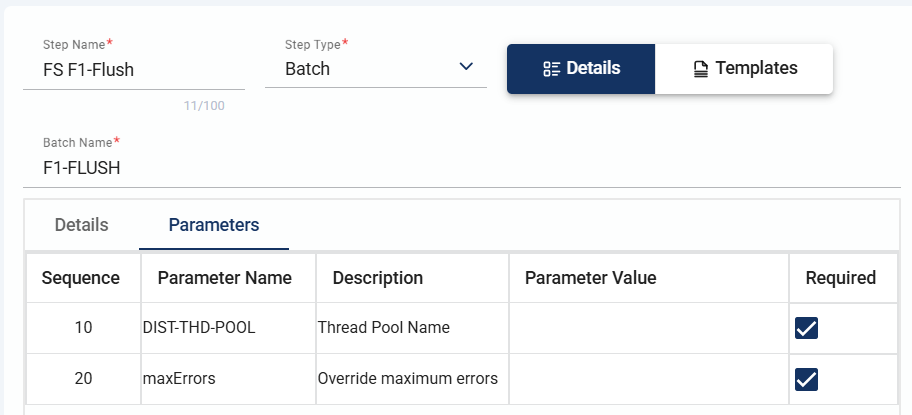
| Field | Description |
|---|---|
| Sequence | Unique values used to identify the parameter. |
| Parameter Name | Name of the parameter. |
| Description | Description of the parameter. |
| Parameter Value | Specifies the value of the parameter. |
| Required | Indicates whether the parameter is required for a batch job to run. |
Create a Query step
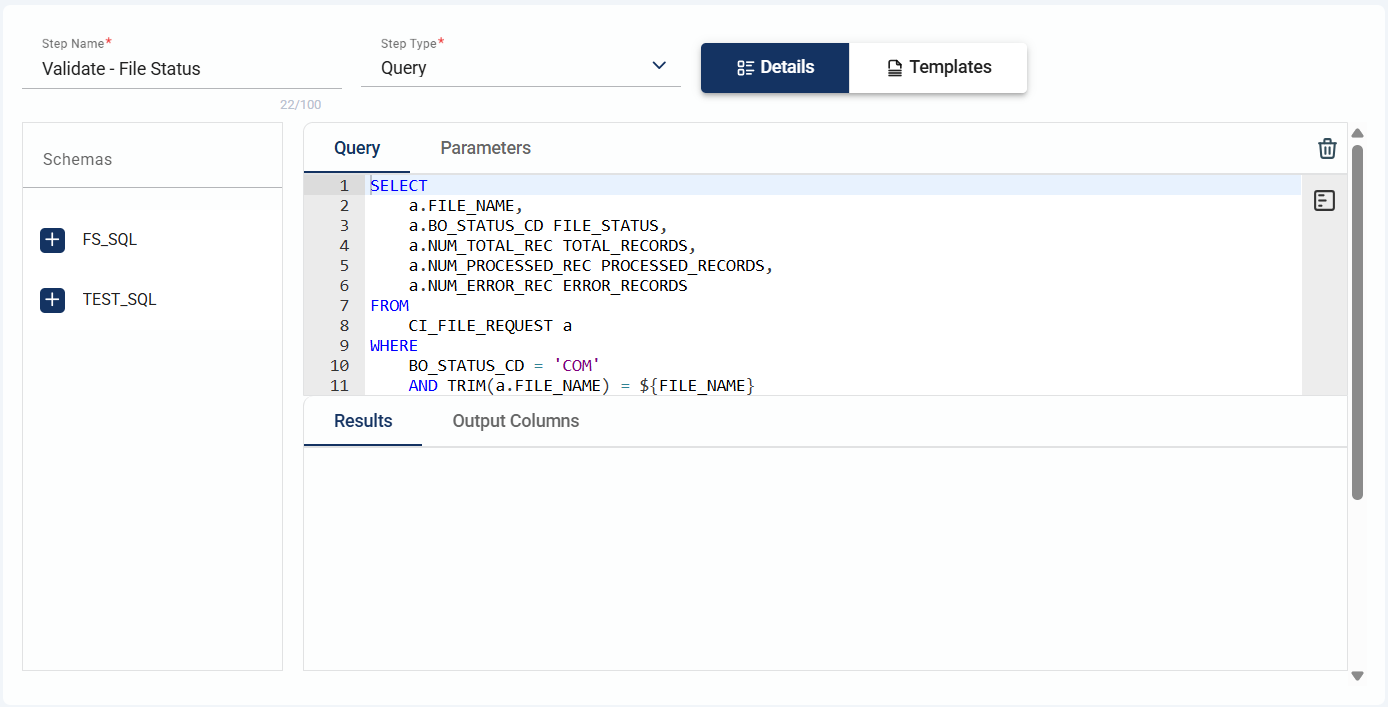
| Section | Description |
|---|---|
| Schema | Specifies the schema of the database where the query will be executed. This is automatically populated from the configured database at the environment level and only needs to be selected at the assertion level. |
| Query | Defines the query being executed to get results for validation. |
| Parameters | Lists the input key-value pairs extracted from the provided query. |
| Result | Specifies the expected result after running the query. |
| Output Columns | List of database columns included in the expected result after running the query, along with their data types. |
Create a File upload step
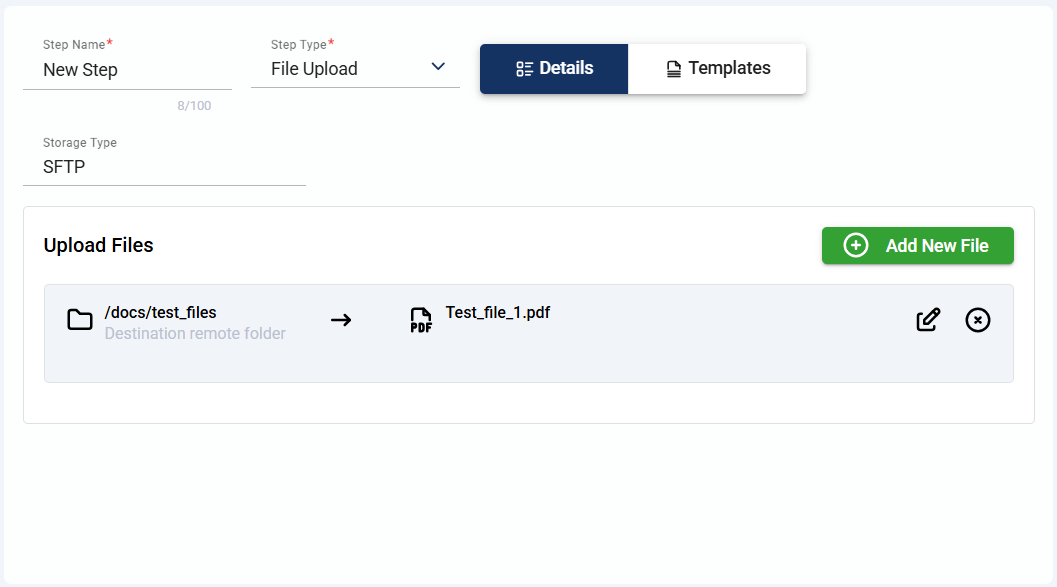
To add a new file, follow these steps:
- Click the Add New File button.
- Specify the Destination remote folder path.
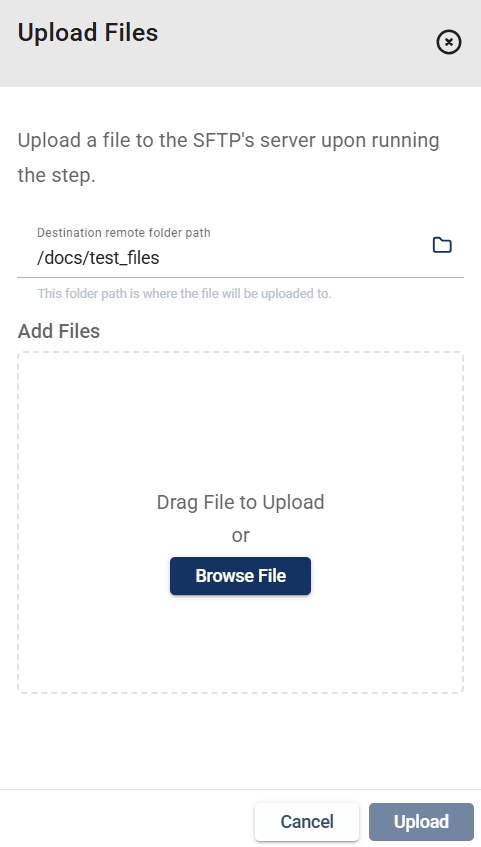
- Drag or browse the files to upload. You have an option to overwrite an existing file.
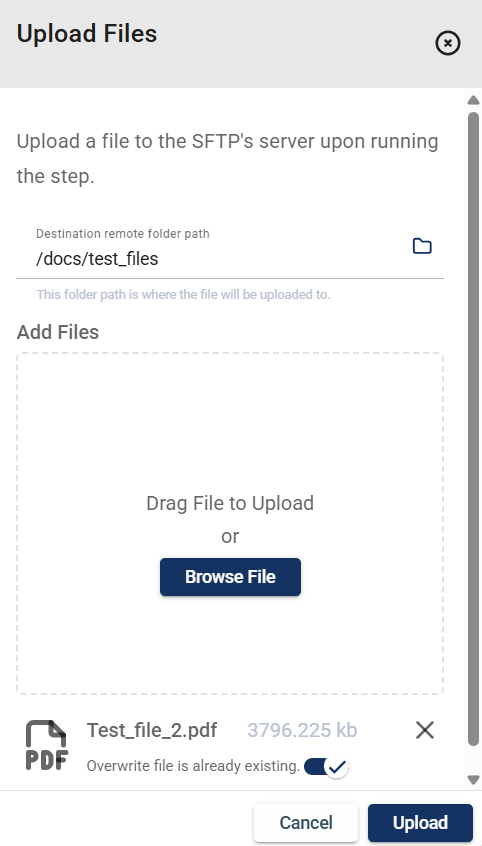
- Click the Upload button.
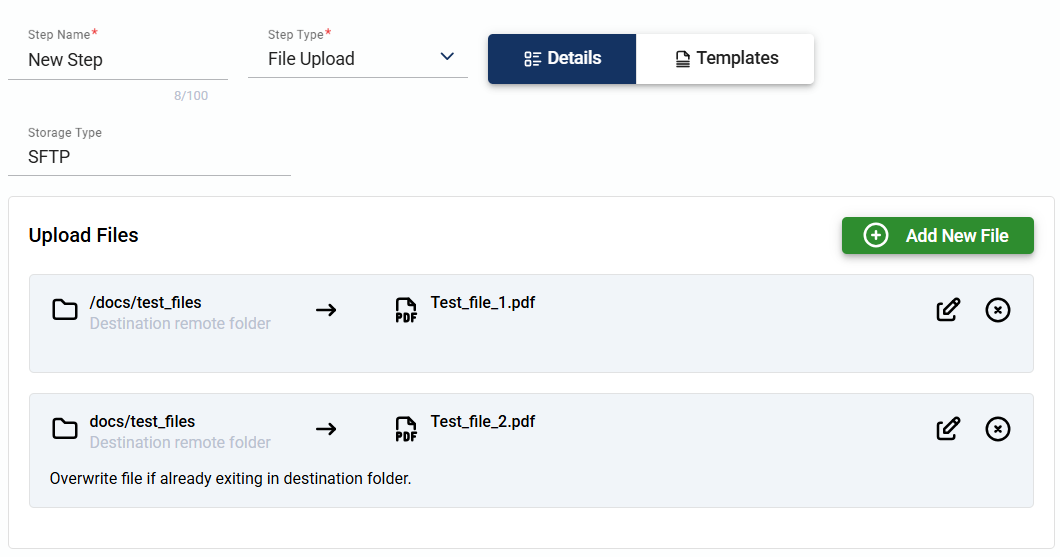
Create a File download step
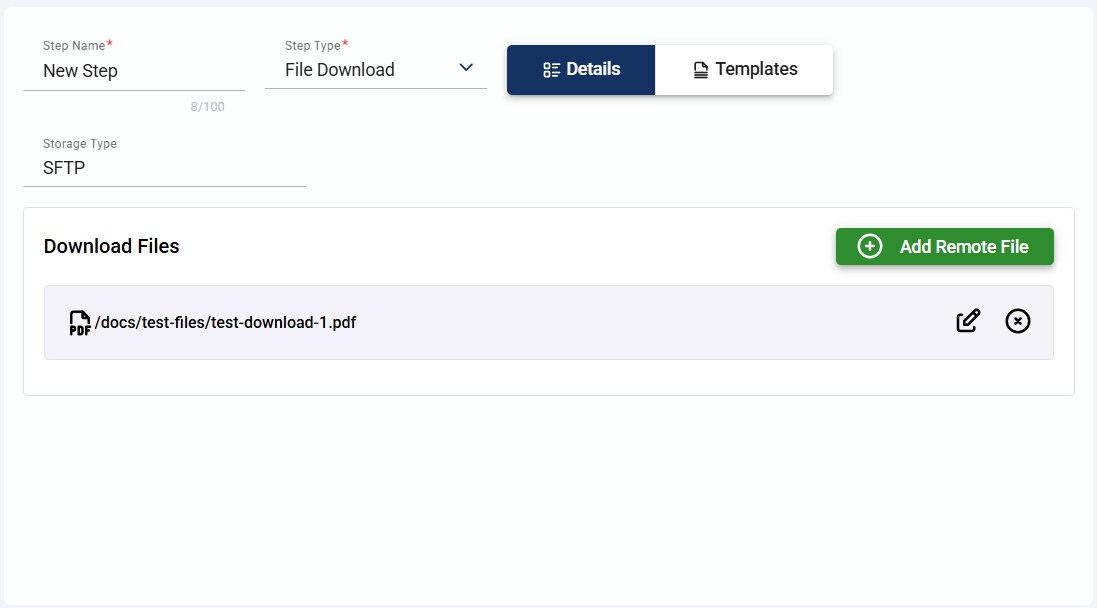
To add a new file, follow these steps:
- Click the Add Remote File button.
- Specify the Remote folder path and the Remote File Name.
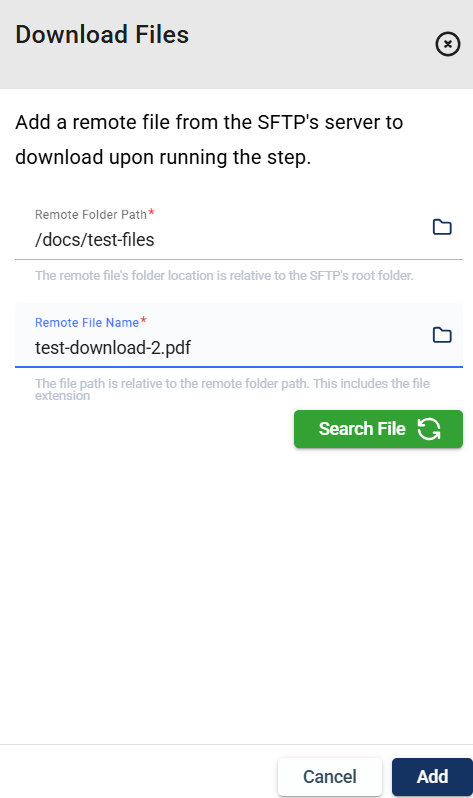
- Click the Add button.
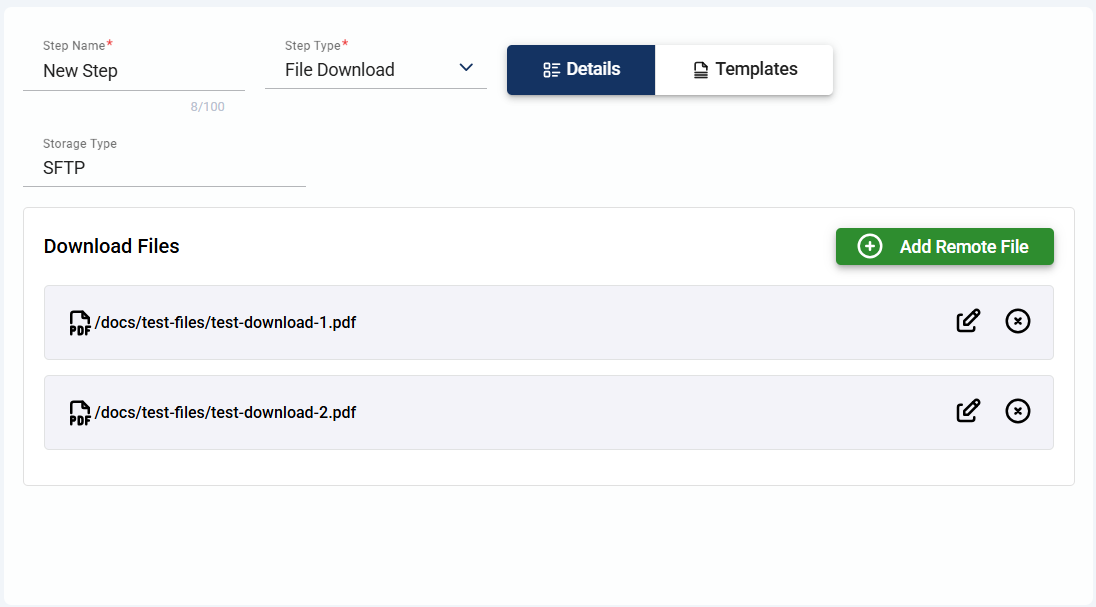
Create a UI step
To create a UI step, upload your .side file in the designated upload box.
Once uploaded, a table with the following columns is displayed:
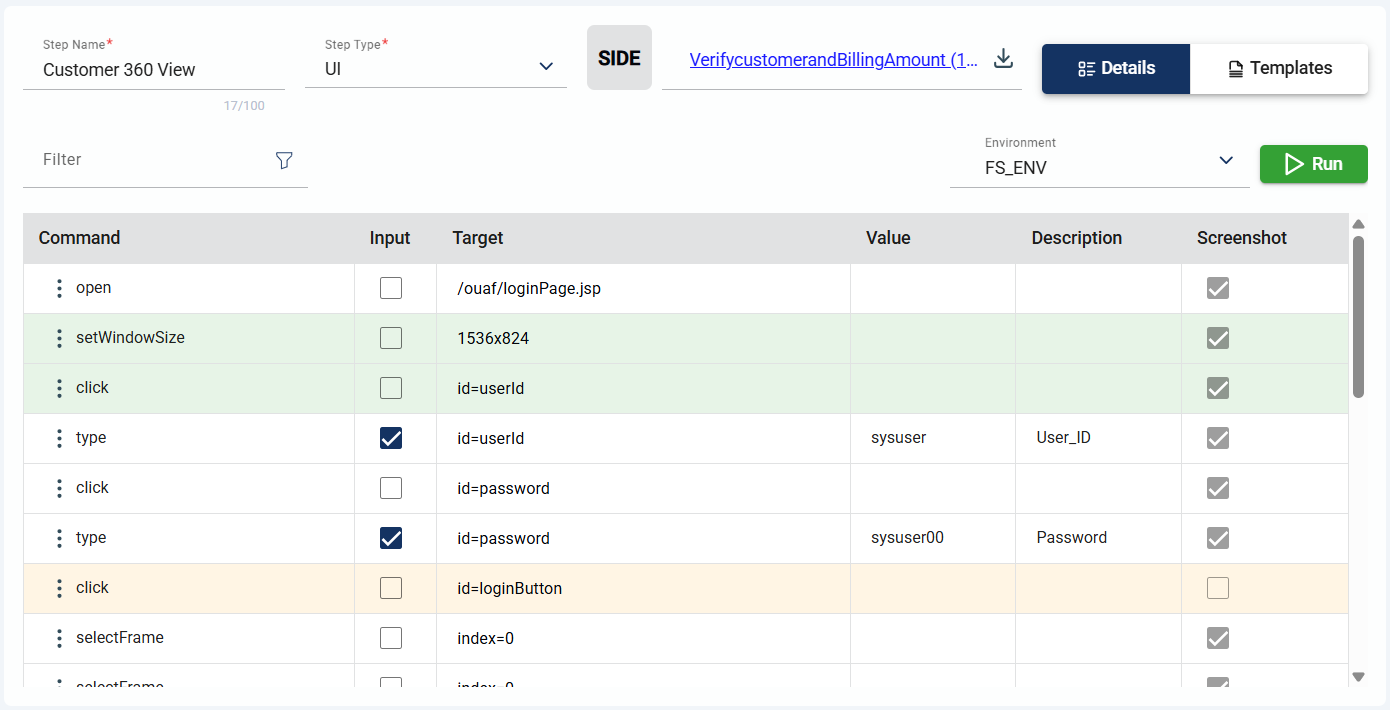
| Column | Description |
|---|---|
| Command | Describes the command or action to be performed on the target. |
| Input | Indicates whether a value is necessary to be supplied to the target element for the command to be executed. |
| Target | Specifies the xpath of the target. |
| Value | Specifies the value to be supplied to the target element. |
| Description | Describes the command. |
| Screenshot | Indicates whether a screenshot will be captured during the execution of the command. |
Run Details
After uploading a side file, you can click the Run button to preview the execution details of the commands defined in the uploaded file.
